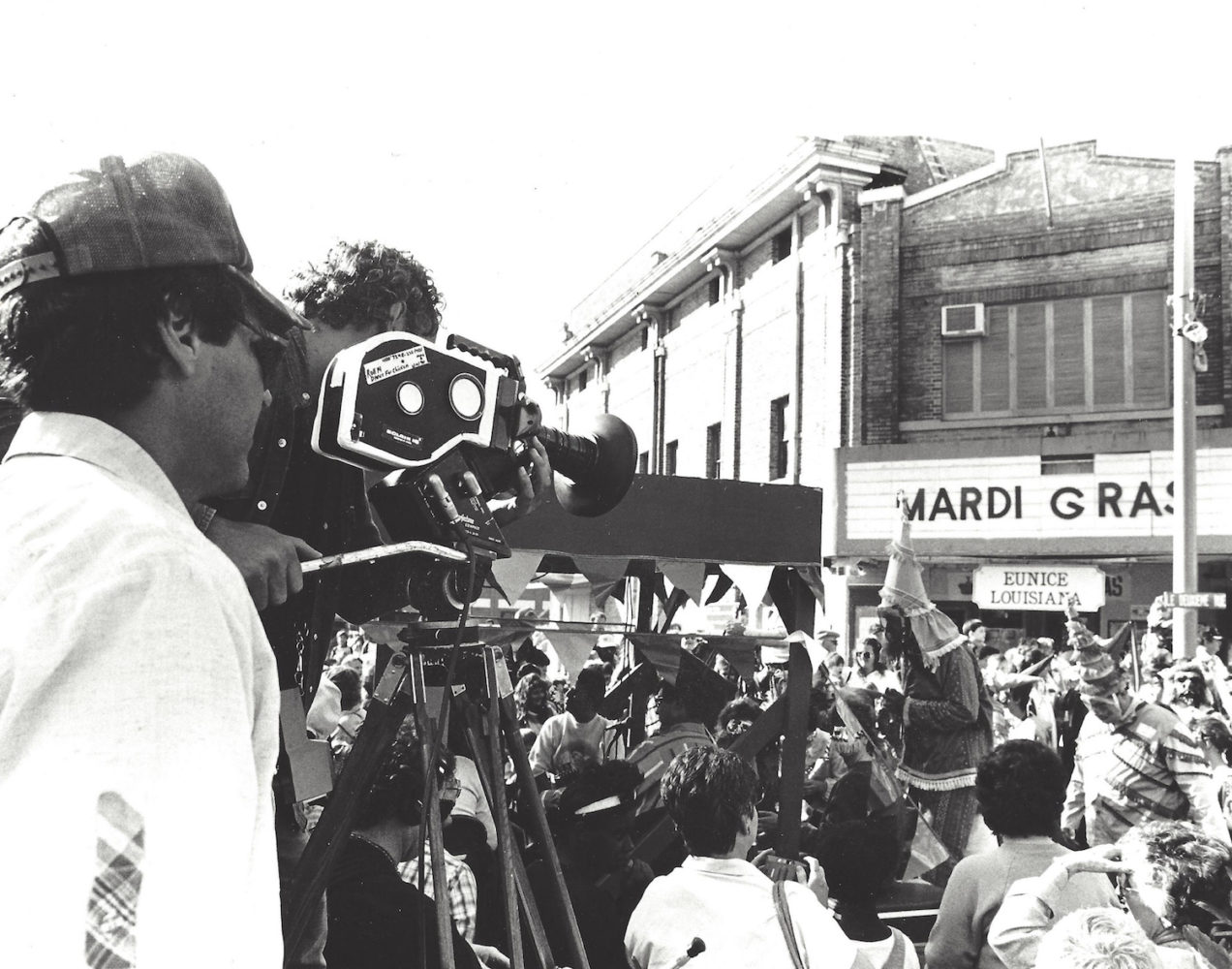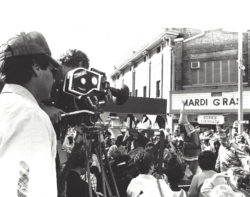Winter 2017
Interview: Pat Mire
An interview with Pat Mire as he celebrates the twenty-fifth anniversary of his landmark documentary, Dance for a Chicken
Published: January 25, 2018
Last Updated: December 6, 2018

Courtesy of Pat Mire.
Image still of Dance for a Chicken.
Did you shoot the film over the course of 1 courir or several years?
“Chicken” was filmed during the rural Mardi Gras season of 1991 and 1992, complete with several communities’ pre-planning, and through receiving the ashes on Ash Wednesday.
What kind of camera did you use?
We filmed with a 16mm Eclair and a second unit 16mm Bolex. We did not have a movie film lab in Louisiana in those days, so my film was going out to Burbank, California, and Irving, Texas, and I was not seeing the rushes until a few days later, and we all know Mardi Gras comes once a year. It still amazes me that it all came back to me looking so good. What you see in the film is most of what we shot.
Any memory that stands out from the production?
This was a wild and spontaneous shoot with uncontrollable characters hiding their identity behind mask and falsetto voice. Maida Owens was on my crew slating (clap sticks) for synchronized sound when some Mardi Gras runners from Iota got on their hands and knees and began sniffing her. Well, she became completely unnerved and the energy of that moment propelled the film to a frenzied visual showcase that kept us all on the edge for the rest of the shoot.
How has Mardi Gras in Acadiana changed since you shot the film?
Mardi Gras in Cajun country had already changed some in the early 1990’s from the days I ran in L’Anse Maigre in the late 1960’s and early 70’s. Back then it was a more bilingual outing and the routes were kept secret so as to bring surprise to whom we visited, and there were no tourist standing on the sidelines. Since I shot the film, the most obvious change is the amount of courirs that have opened up to men and women running together. Back in the day, we put the money we saved on the port-o-let fees directly on beer and boudin.
Pat Mire continues to make films and direct the annual Cinema on the Bayou film festival in Lafayette, scheduled for Jan. 24-31. cinemaonthebayou.com
